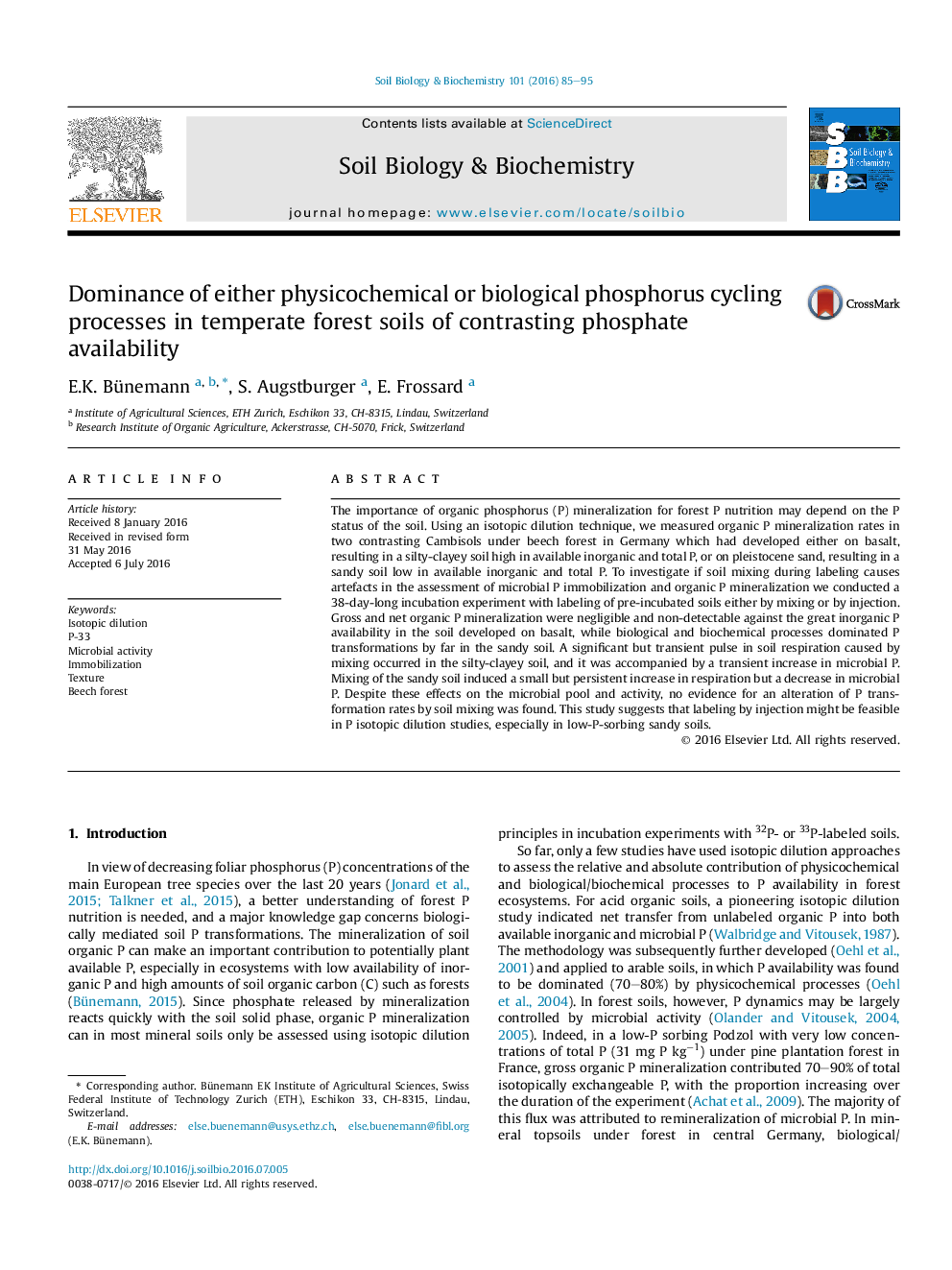| Article ID | Journal | Published Year | Pages | File Type |
|---|---|---|---|---|
| 8363416 | Soil Biology and Biochemistry | 2016 | 11 Pages |
Abstract
The importance of organic phosphorus (P) mineralization for forest P nutrition may depend on the P status of the soil. Using an isotopic dilution technique, we measured organic P mineralization rates in two contrasting Cambisols under beech forest in Germany which had developed either on basalt, resulting in a silty-clayey soil high in available inorganic and total P, or on pleistocene sand, resulting in a sandy soil low in available inorganic and total P. To investigate if soil mixing during labeling causes artefacts in the assessment of microbial P immobilization and organic P mineralization we conducted a 38-day-long incubation experiment with labeling of pre-incubated soils either by mixing or by injection. Gross and net organic P mineralization were negligible and non-detectable against the great inorganic P availability in the soil developed on basalt, while biological and biochemical processes dominated P transformations by far in the sandy soil. A significant but transient pulse in soil respiration caused by mixing occurred in the silty-clayey soil, and it was accompanied by a transient increase in microbial P. Mixing of the sandy soil induced a small but persistent increase in respiration but a decrease in microbial P. Despite these effects on the microbial pool and activity, no evidence for an alteration of P transformation rates by soil mixing was found. This study suggests that labeling by injection might be feasible in P isotopic dilution studies, especially in low-P-sorbing sandy soils.
Related Topics
Life Sciences
Agricultural and Biological Sciences
Soil Science
Authors
E.K. Bünemann, S. Augstburger, E. Frossard,
